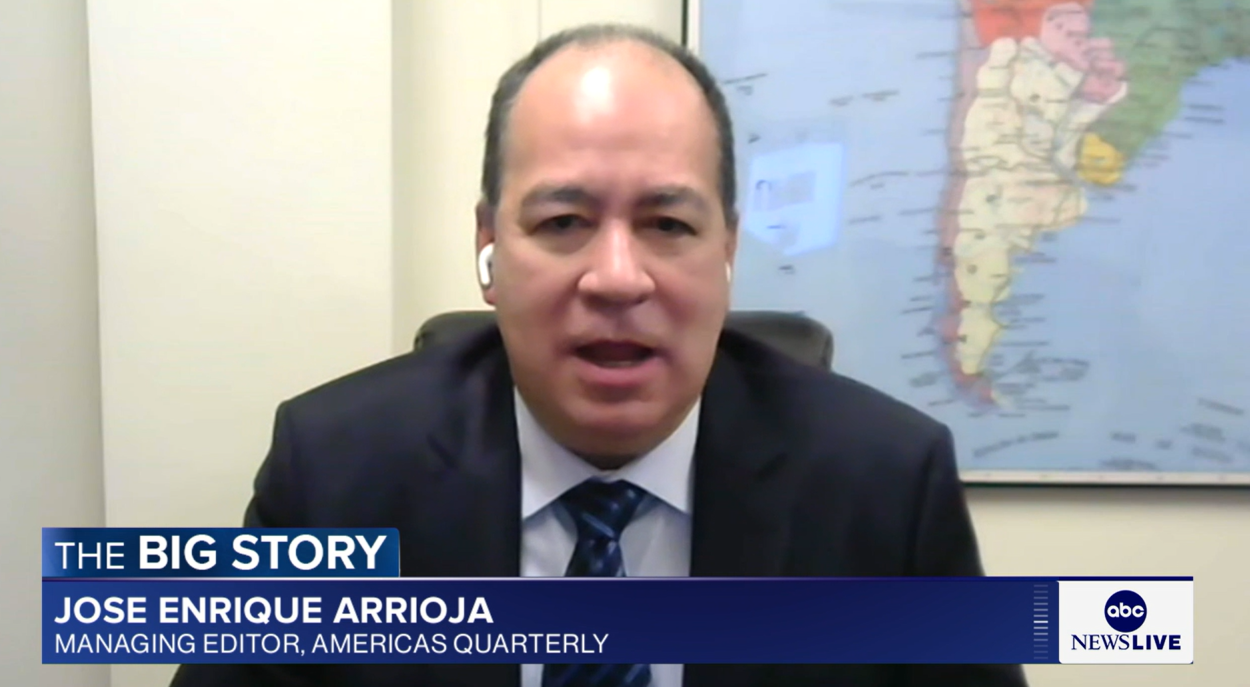Rising Trade Ties Boost Mexico’s Economy
Rising Trade Ties Boost Mexico’s Economy
Mexico exported almost $500 billion worth of goods and services to the United States in 2011 and is now looking to further expand its trade ties by joining the Trans-Pacific Partnership.
As Mexico’s economy grows, the country’s leaders are working to foster trade ties with an expanding network of countries. On October 8, Mexico will become a full partner in the Trans-Pacific Partnership and will have the chance to work with Canada, Chile, Peru, and the United States as well as a group of Asian economies in negotiating the world’s largest free-trade bloc. In June 2012 at a press conference at the G20 meeting in Los Cabos, U.S. Trade Representative Ron Kirk said: "We are delighted to invite Mexico, our neighbor and second-largest export market, to join the TPP negotiations."
Since NAFTA’s implementation in 1994, Mexico has inked trade agreements with 43 countries and now has more free-trade pacts than any other country in Latin America except Chile. Bilateral trade with the United States has boomed over that period as well. As a recent Washington Post article explains, trade with the United States has increased by over 600 percent since the North American Free Trade Agreement was enacted in 1994. Overall, despite disputes over trucking and tomatoes, trade between Mexico and the United States increased by 17 percent in 2011, reaching a record-breaking $461 billion.
Mexico is the world’s leading exporter of flat screen televisions, the second largest exporter of refrigerators, and the third largest exporter of cellular phones. Trade is helping Mexico’s economy recover from the 2008 global recession. According to data from the World Bank’s Development Indicators database, exports of goods and services accounted for 31 percent of Mexico’s total economic output last year. By this measure, Mexico has one of the world’s most open economies. By contrast, Brazil’s exports accounted for only 11.9 percent of GDP. Mexico’s ratio of exports to GDP is slighter higher than China’s and likely to increase further.
After developing a number of successful export sectors that focus on the U.S. market, Mexico is looking across the Pacific to extend trade ties. On September 10, Mexican President Felipe Calderón visited Singapore to talk about increasing bilateral trade and investment. Come October, Mexico, along with Canada and the United States, will join negotiations to create the TPP, which, when functional, will account for more than a quarter of the world’s GDP. Furthermore, Mexico will have the chance to work with the United States to do what head of research at Eurasia Group Ian Bremmer calls the “critical step” of trying to convince Japan to join “the commercial centrepiece of the U.S. pivot to Asia.” Japan’s entry in the TPP, Bremmer explains, “would ensure that it presents a credible, stabilising alternative to an Asia in which China is seeking to entrench its own economic rules.”
A report from The Economist explains that Mexico is already diversifying export markets, with the U.S. share of Mexico’s market dropping from 89 percent in 2000 to roughly 78 percent in 2011. But, even as Mexico reaches out to Asia in search of additional export markets, its proximity to the United States remains a benefit. In a recent CNN.com blog post, Fareed Zakaria noted: “Mexican factories are slowly replacing Chinese products in America, thanks in part to regional trade agreements but also because China itself is facing rising labor costs.”
In other trade news from the hemisphere:
- In a report released on September 13, the Economic Commission for Latin America and the Caribbean (ECLAC) cautioned that despite a projected 4 percent growth rate in exports this year, Latin America could see a slowdown in trade in 2012 due to the global economic crisis. ECLAC also estimated that exports from Mexico and the Caribbean will grow at 7.3 percent above the regional average, whereas South American exports will only rise by 1.1 percent.
- Tomato growers in Florida are seeking to launch an anti-dumping investigation into Mexican tomato imports. Mexico’s government is opposing the measure.
- On October 16, The Wall Street Journal reported that rising labor costs in China “present a chance for Mexico to wrest back some of the business that chased cheap labor across the Pacific in the past decade.”








